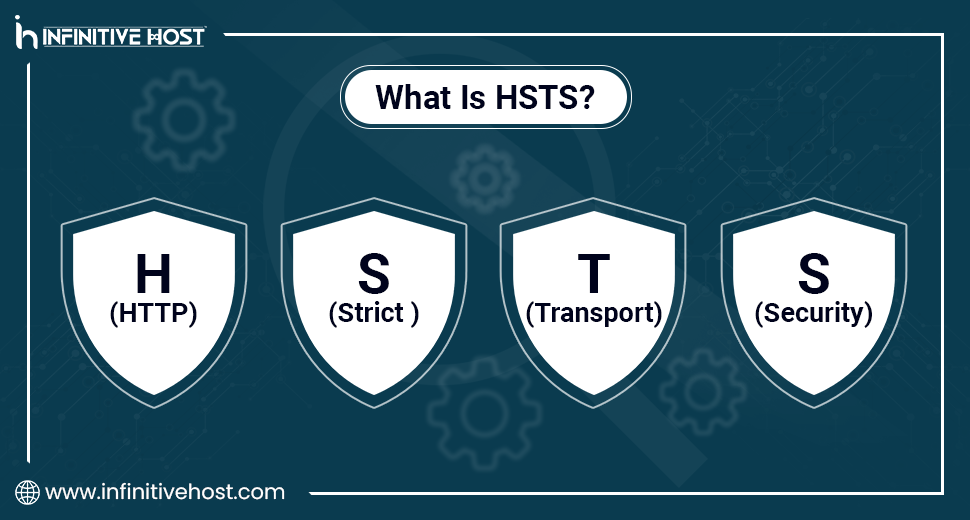What Is HSTS? (HTTP Strict Transport Security): A Guide
In the case of advanced digital security, you’ve probably heard about different terms like HTTPS, SSL certificates, and encryption. But there is also another powerful safety feature you should learn about: HSTS. So, what is HSTS & why is it necessary? Let’s simply break it down into easy words.
About HSTS
HSTS (which stands for HTTP Strict Transport Security) basically refers to a web security-based policy mechanism that usually forces browsers to only link to a site with the help of HTTPS rather than HTTP.
In simple language:
- Without HSTS, your website can be easily vulnerable to different attacks, such as man-in-the-middle (MITM) or SSL stripping.
- With the help of HSTS, your browser automatically levels up all available connections to HTTPS, making it a lot harder for all those attackers to sneak in.
So, what is HSTS actually doing? It’s generally telling browsers:
“Always talk to me safely; no shortcuts permitted.”
Why Is HSTS Necessary?
If you are thinking about what is HSTS utilized for, the key goal is security. Think about logging into your specific bank account on a public Wi-Fi. With the absence of HSTS, any hacker could stop or interrupt your connection. But with the help of HSTS, your search engine will refuse to load the unprotected version of the website, always keeping your data secure.
Some essential advantages of HSTS are:
- Stops unnecessary SSL stripping attacks
- Make sure that your website is always loaded over HTTPS.
- Enhances customer trust and also brand credibility
- Helps simply with SEO (Google always goes for HTTPS-based websites)
How Does HSTS Work?
To truly know about what is HSTS, let’s have a look at the whole process:
- A visitor visits your site.
- Your web server replies with a unique HTTP header (Strict-Transport-Security).
- The browser always remembers this setting for a specific amount of time (max-age).
- Next time, the browser automatically connects with the help of HTTPS only.
This states that even if someone wants to redirect users to the non-protected version, the browser usually ignores it.
What Is HSTS Preload?
Here’s where it gets more updated. If you are still thinking about what is HSTS in the case of long-term security, you’ll need to know about HSTS Preload.
Preload states that your domain can be included in a list built directly into web browsers (such as Chrome). This makes sure that your website is always loaded with HTTPS, also on the very first user visit.
Common Misunderstandings Related to HSTS

Some people are mistaken about what is HSTS and how it really works. Let’s just clear all that up:
- HSTS doesn’t simply replace SSL/TLS certificates—you still want HTTPS set up.
- HSTS won’t easily make a slow server faster. If you are simply running complex applications, you may want a GPU server for improved performance.
- HSTS basically adds a layer of security, not a performance tool.
How To Enable HSTS
If you know about what is HSTS and need to enable it, here’s an instant guide:
- Ensure your website already has a genuine SSL/TLS certificate.
- Include the HSTS header in your server setup. For instance:
Strict-Transport-Security: max-age=31536000; includeSubDomains; preload
- Just test your setup via different online tools (such as SSL Labs).
- Submit your site domain for HSTS Preload if you need powerful safety.
Risks of Using HSTS
Now that you really understand what HSTS is, you should also understand about its risks:
- If you enable HSTS improperly, users generally might be locked out of your website if your security certificate expires.
- Testing it effortlessly on a staging server first is the best move.
So while it improves security, you just have to handle it cautiously.
What Is HSTS in Relation to Hosting?
This is the case where Infinitive Host stands out. You might be wondering, “If I know what is HSTS, how do I implement it in my chosen hosting environment?”
Well, even if you are on:
- Cloud Hosting
- GPU dedicated server for AI tasks & running AI image generator-based projects
- Dedicated servers for enterprise-level applications
… HSTS can (and should) be enabled across every platform. At Infinitive Host, all our servers—consisting of a GPU dedicated server—easily support HSTS setup, making sure that your tasks stay safe while also being blazing-fast.
Real-World Example of HSTS
Think about how you are creating an AI project with the help of a GPU server. You are simply training advanced models, utilizing challenging compute, and maybe also using an AI image generator. If your website or app doesn’t utilize HSTS, there is always a chance your visitors’ connections could be seized. That’s not only the worst for safety—it kills users’ trust.
By including HSTS on your GPU server or cloud hosting, you make sure that every single connection remains locked down and safe.
What Is HSTS vs. HTTPS?

The other common question after “What is HSTS” is, “How does it compare to HTTPS?”
- HTTPS easily encrypts the connection.
- HSTS forces available browsers to only utilize HTTPS.
So, HTTPS is a kind of lock. HSTS is the rule that always says, “this lock must be utilized every single time.”
Troubleshooting HSTS Issues
In some situations, enabling HSTS can result in a lot of problems, such as:
- Users are simply getting locked out just because of expired security certificates.
- Incorrect header settings are leading to website issues.
Tips to prevent problems:
- First of all, test that on staging first.
- Utilize trustworthy hosting like Infinitive Host, where experts help set up HSTS securely.
- Renew SSL/TLS certificates timely.
Conclusion: What is HSTS?
So, what is HSTS about? It’s all about safeguarding your site users, gaining trust, and making your website safer. While it doesn’t directly improve speed, pairing HSTS with robust hosting (such as a GPU dedicated server from Infinitive Host) guarantees both security and speed are fully covered.
If your task consists of AI-based tasks, a GPU cluster, or running advanced applications via NVIDIA A100 hardware, you can’t easily afford to risk unprotected connections. HSTS simply locks the main door so that no one sneaks in.


.webp)



